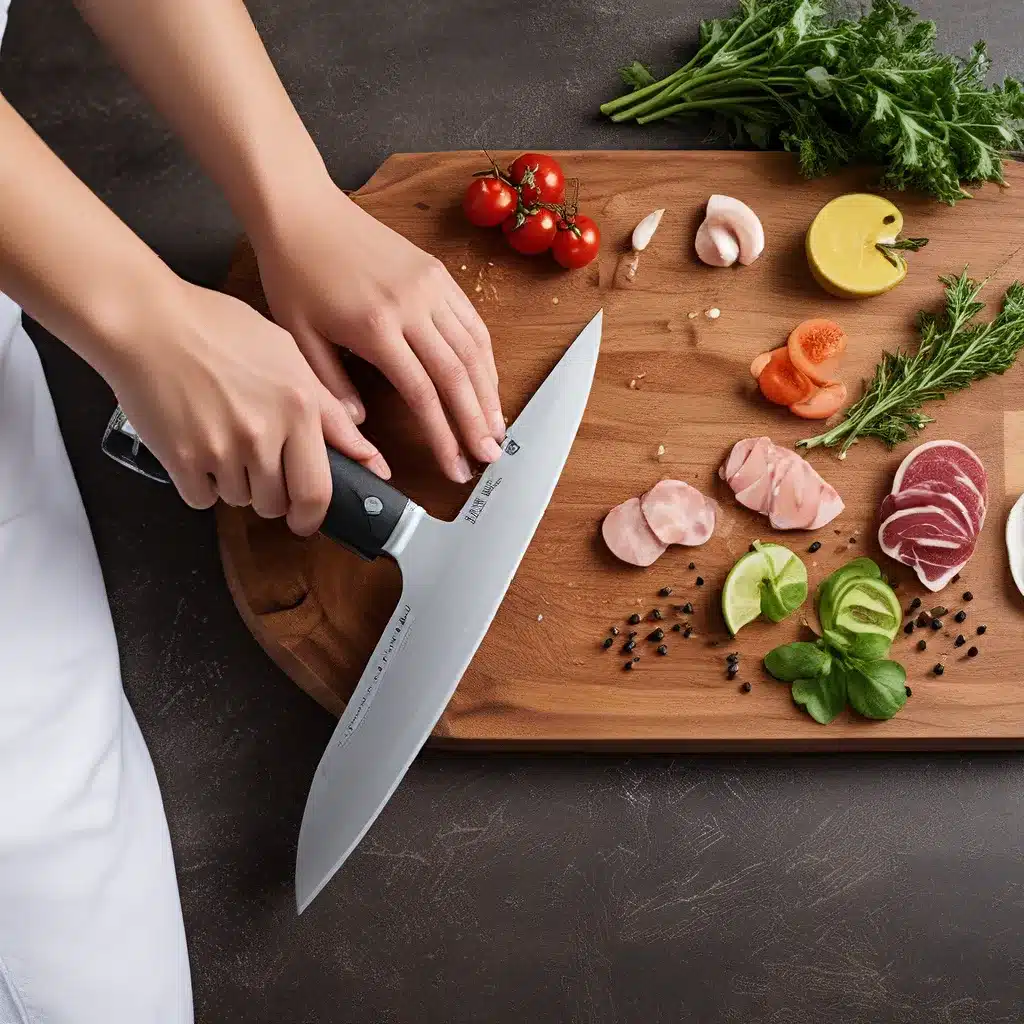
As a passionate home chef, I’ve always been fascinated by the art of using high-quality knives. After all, a sharp, well-maintained blade can make all the difference in the kitchen, transforming even the most mundane tasks into a culinary delight. But did you know that there’s more to getting the most out of your knives than just sharpening them regularly?
In this article, I’ll take you on a journey to uncover the secrets of unlocking your blades’ full potential. From understanding the importance of proper blade maintenance to exploring the latest advancements in knife technology, you’ll discover how to elevate your culinary skills to new heights.
Maintaining the Cutting Edge: The Key to Blade Longevity
Let’s start with the basics: keeping your knives in top shape. Dakin-Flathers, a renowned manufacturer of high-quality bandsaw and bandknife blades, emphasizes the importance of proper maintenance. As they explain, “Every Dakin-Flathers blade is manufactured in the UK at our own purpose-built 24-hour facility to strict quality standards to ensure high performance, longevity, and reliability.”
This same principle applies to your kitchen knives. Regular sharpening and honing are essential to ensuring your blades stay razor-sharp and perform at their best. But there’s more to it than just running your knife across a sharpening stone. Proper blade care also involves cleaning, oiling, and storing your knives correctly.
Sharpening and Honing: The Dynamic Duo
Sharpening and honing may sound like the same thing, but they actually serve different purposes. Sharpening involves removing small amounts of metal to create a new, sharp edge on your knife. Honing, on the other hand, helps to realign the edge, keeping it straight and true.
It’s a good practice to hone your knives before each use, using a honing steel or ceramic rod. This helps to maintain the edge and prevents it from becoming dull too quickly. Sharpening, however, should be done less frequently, depending on how often you use your knives and the type of steel they’re made from.
Cleaning and Storing: Preserving the Blade’s Integrity
Proper cleaning and storage are also crucial for keeping your knives in top condition. Always wash your knives by hand using warm, soapy water, and dry them thoroughly. Avoid putting them in the dishwasher, as the harsh detergents and high temperatures can damage the blades over time.
When it comes to storage, it’s best to use a designated knife block or magnetic strip. This keeps the blades protected and prevents them from getting nicked or dinged in a cluttered drawer. Tramontina, a leading manufacturer of kitchen knives, emphasizes the importance of proper storage, noting that their “Century Wood” series features “brown treated wood handles” to ensure long-lasting durability.
Unlocking the Potential: Exploring Advances in Knife Technology
While proper maintenance is essential, the latest advancements in knife technology can also play a significant role in maximizing your blades’ performance. From innovative materials to cutting-edge designs, there’s always something new to discover in the world of culinary cutting tools.
The Cutting Edge: Blade Materials and Designs
One of the most significant developments in knife technology has been the introduction of new blade materials. While traditional stainless steel is still a popular choice, modern knife makers are exploring a wide range of alternative materials, each with its own unique properties and benefits.
For example, high-carbon steel is renowned for its exceptional sharpness and edge retention, making it a favorite among professional chefs. Ceramic blades, on the other hand, are incredibly hard and durable, with the added benefit of being non-reactive to acidic foods.
But it’s not just the blade material that matters; the design and construction of the knife are also crucial. Some knives feature a full-tang design, where the blade extends all the way through the handle, providing greater stability and balance. Others boast a precision-ground edge, ensuring a clean, effortless cut every time.
Unlocking Machine Potential: Blades for Industrial Applications
While we’ve been focusing on kitchen knives, it’s worth noting that the principles of blade technology and maintenance apply to a wide range of industrial applications as well. Dakin-Flathers, the UK-based blade manufacturer, specializes in producing high-quality bandsaw and bandknife blades for use in various industries, from woodworking to metalworking.
As they explain, “Machine manufacturers specify and fit Dakin-Flathers blades because they help machines to reliably reach their true performance potential.” By ensuring the use of durable, well-maintained blades, industrial operators can unlock the full capabilities of their machinery, leading to increased efficiency, productivity, and cost savings.
Sharpening Your Culinary Edge: Putting It All Together
Now that we’ve explored the importance of proper blade maintenance and the latest advancements in knife technology, it’s time to put it all together and sharpen your culinary edge.
Remember, a well-maintained, high-quality knife is not just a tool – it’s an extension of your hands, allowing you to unleash your culinary creativity and produce exceptional results in the kitchen. By investing the time and effort into caring for your blades, you’ll be rewarded with a lifetime of precise, effortless cutting.
And don’t forget to check out the impressive selection of knives available at https://hermanknives.net/, where you can find the perfect cutting tools to suit your needs. Whether you’re a professional chef or a passionate home cook, there’s a knife out there that will help you reach new heights in the culinary world.
So, sharpen your skills, embrace the latest advancements in knife technology, and let your blades shine. The possibilities are endless when you have the right tools at your fingertips.


